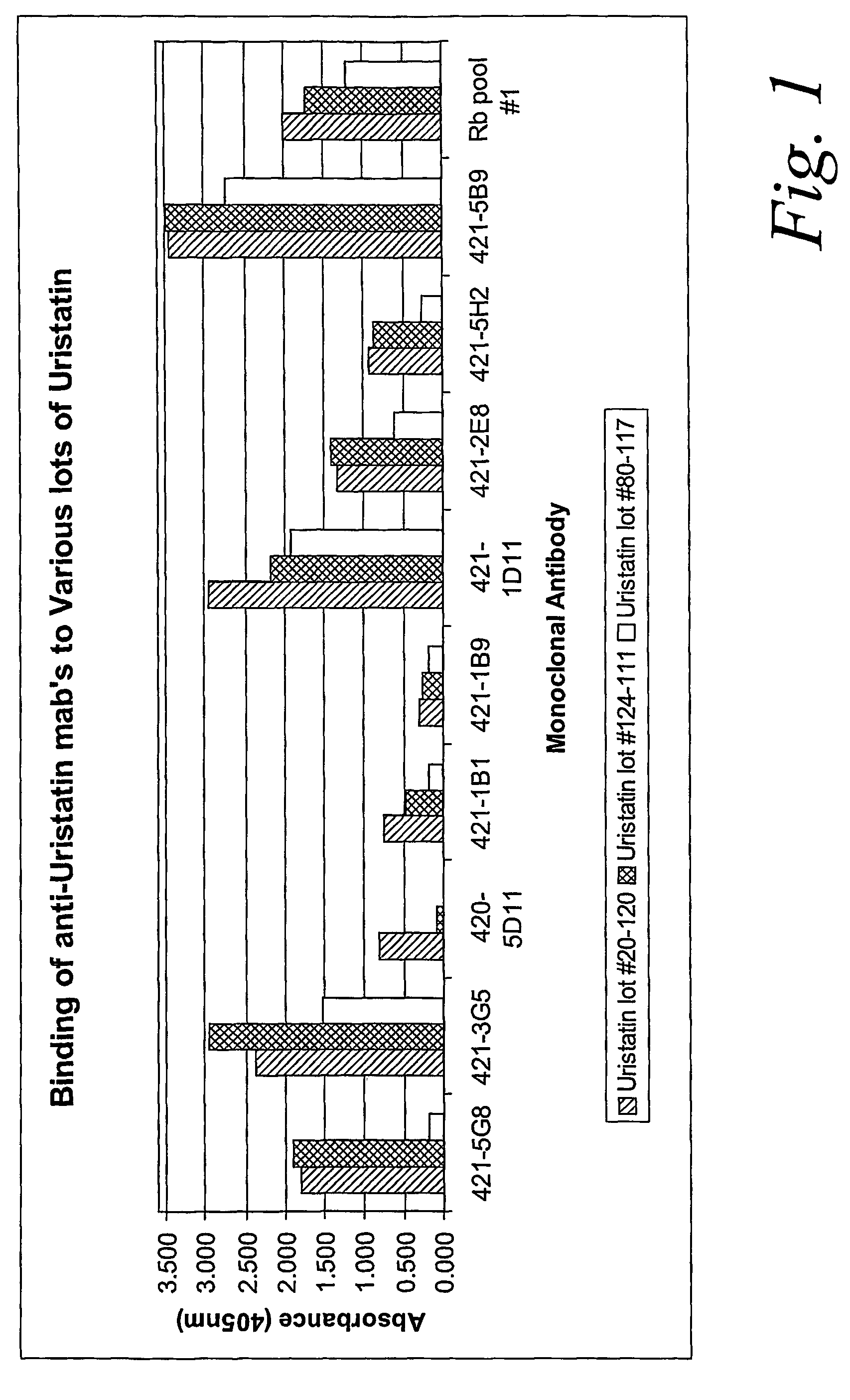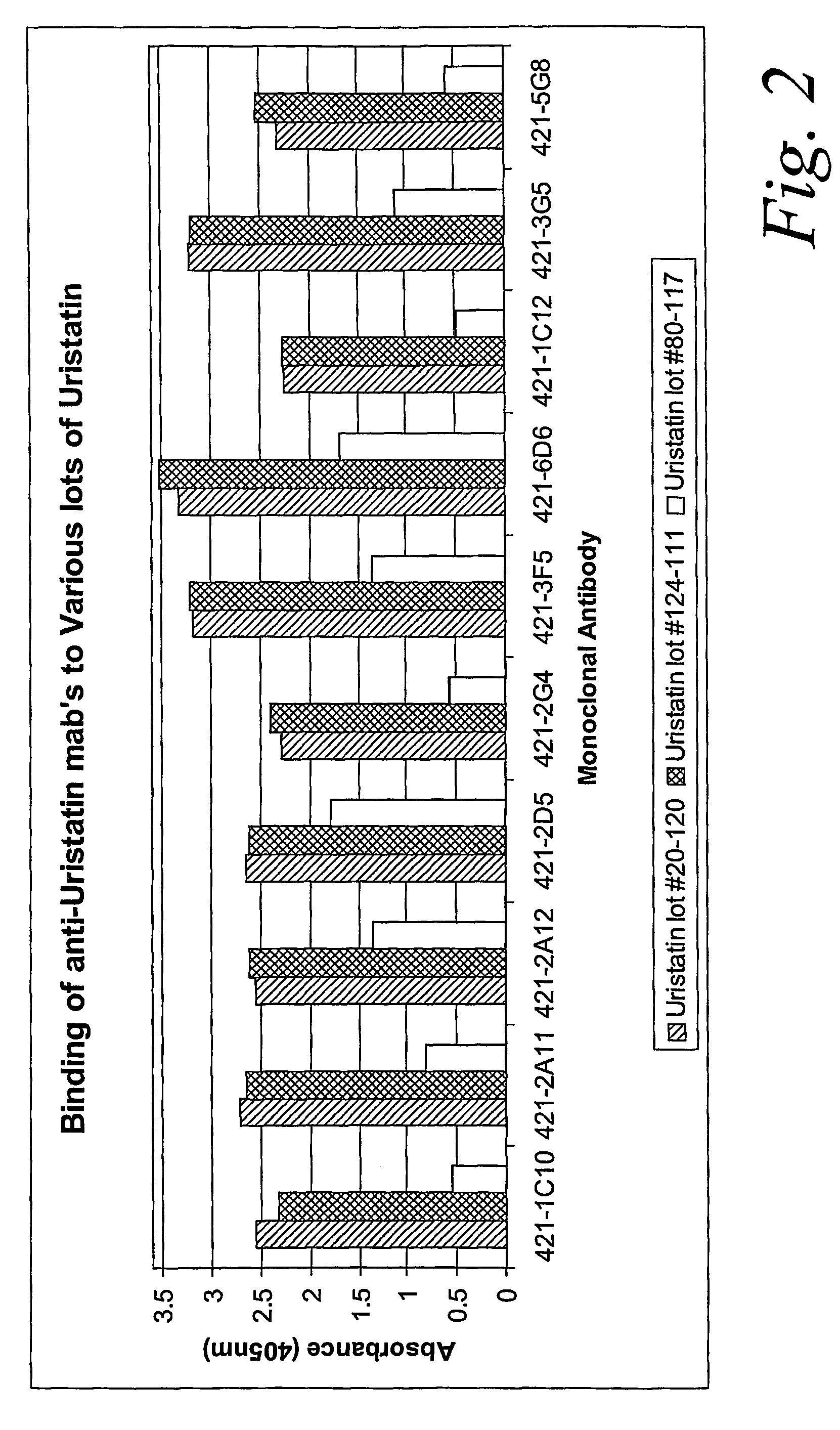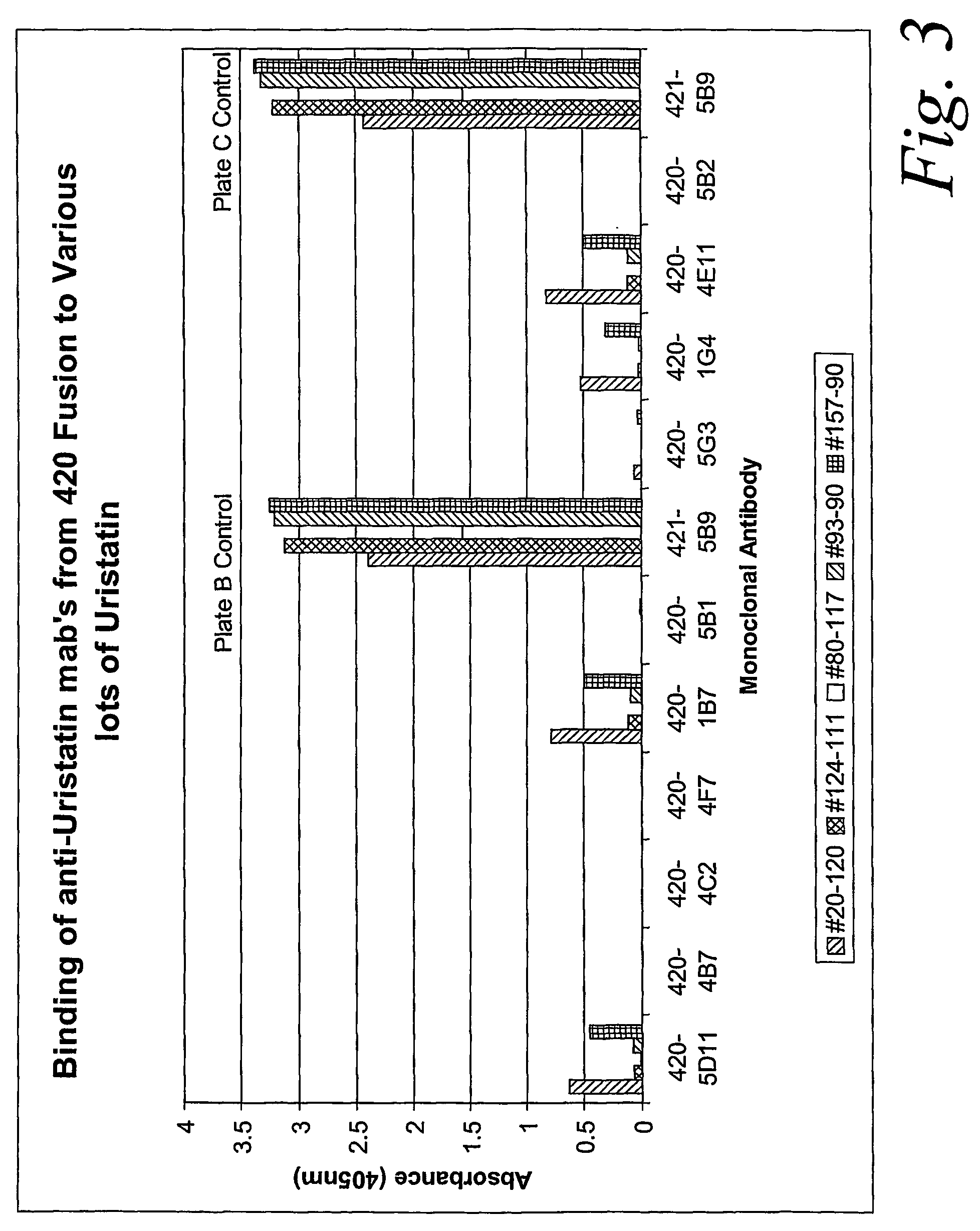Monoclonal antibodies for detection of urinary trypsin inhibitors
a technology monoclonal antibodies, which is applied in the field of detection of urinary trypsin inhibitors, can solve the problems of less clinical utility, difficult to distinguish conditions for which the patient would need therapy from general ailments, and polyclonal antibodies are not able to distinguish the various forms of urinary trypsin from each other
- Summary
- Abstract
- Description
- Claims
- Application Information
AI Technical Summary
Benefits of technology
Problems solved by technology
Method used
Image
Examples
example 1
Preparation of Monoclonal Antibodies
[0042]BALB / c mice were immunized with 100 μg / mouse of purified UTIs obtained from renal patients by SciPac Ltd. Sittingbourne, Kent, UK, product code P250-1 to produce a response. After one month, ocular bleeds were taken from each mouse and titered by ELISA against the immunogen to assess the immune response. The mice showing the best response were boosted by injection of 100 μg / mouse with the immunogen. After four days, mice were sacrificed and their spleens used for fusion according to the method of Kohler and Milstein, Nature 256:495 (1975). The spleenocytes were fused with SP2-0 Ag14 myeloma cells using PEG (polyethylene glycol) solution with a ratio of spleenocytes to Myeloma cells of 5:1 and plated into 96 well plates using 50% PEG / HAT growth media. After 7-10 days of incubation at 37 degrees Celsius, fusion cultures were monitored for growth by feeding every 3-4 days utilizing the HAT (hypoxanthine, aminopterin, thymidine) selection method...
example 2
Screening Procedure of Polyclonal Antibodies
[0046]Rabbit polyclonal antibodies raised against the purified UTIs were used in the screening process as this antibody was expected to be non-specific for any given form of UTIs. Serum and urine specimens from three patients with infection and two healthy controls were characterized by western blot tests using these polyclonal antibodies. The western blot tests used the commercial pre-cast gel system (Invitrogen, San Diego Calif.). Urine and plasma specimens were loaded with 1 μg and 5 μL per lane. The western blots were stained with a WesternBreeze® chromogenic immunodetection kit (from Invitrogen) following the manufacturer's instructions. Rabbit anti-UTI antiserum was used at a dilution of 1:250 000 as the primary antibody in the western blot analysis (See Table 1). These western blot results demonstrated that the rabbit polyclonal antiserum body detected Uristatin, Bikunin, AUBK, TBP, P-α-I, and I-α-I. The THP cross reactivity was une...
example 3
Characterization of Monoclonal Antibodies Against Purified Uristatin and Bikunin Standards
[0053]The urinary trypsin inhibitors were produced by SciPac Ltd for our study (Sittingbourne, Kent, UK, product code P205-1); these are purified from the urine of patients with chronic renal failure. The standards were characterized by SDS-PAGE. We used a commercial pre-cast gel system (Invitrogen, San Diego Calif.) 4-12% NuPAGE® Bis-Tris with a MES (2-morpholinoethanesulfonic acid) running buffers (reducing and non-reducing), following exactly the manufacturer's procedure. Specimens were loaded at 2 μg per lane. Estimations of the proteins' molecular weights were based on a full set of standards: MagicMark12™ (Invitrogen) and SeeBlue®Plus2 (Invitrogen). Protein bands were stained with Colloidal Blue® (Invitrogen).
[0054]The results of these tests showed that UTI lot 20-120 contained 15-20% 17 kDa proteins, 50-55% 35 kDa proteins, and 25-30% 60-80 kDa proteins. UTI lot 124-111 had about 85% of ...
PUM
| Property | Measurement | Unit |
|---|---|---|
| molecular weight | aaaaa | aaaaa |
| molecular weight | aaaaa | aaaaa |
| molecular weight | aaaaa | aaaaa |
Abstract
Description
Claims
Application Information
 Login to View More
Login to View More - R&D
- Intellectual Property
- Life Sciences
- Materials
- Tech Scout
- Unparalleled Data Quality
- Higher Quality Content
- 60% Fewer Hallucinations
Browse by: Latest US Patents, China's latest patents, Technical Efficacy Thesaurus, Application Domain, Technology Topic, Popular Technical Reports.
© 2025 PatSnap. All rights reserved.Legal|Privacy policy|Modern Slavery Act Transparency Statement|Sitemap|About US| Contact US: help@patsnap.com



